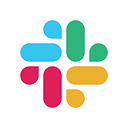Multiply your app’s reach with Slack Connect
Introduce more organizations to your integration by making it compatible with Slack Connect
Slack Connect is a new, more secure and productive way for organizations to work together. It makes collaborating with external partners in Slack as simple as with your own team — replacing email and streamlining teamwork for everyone.
More than 41,000 organizations rely on Slack Connect to collaborate with clients, partners, vendors and more. For developers, these connections are a discovery driver.
Optimizing your app for Slack Connect means everyone in the channel can see your app’s capabilities in action — regardless of whether those collaborators have your app installed on their own workspace. It’s also a chance to explore how your app can benefit multiple organizations working together in the Slack Connect environment.
Here are a few examples of how different developers have put this into practice.
Increasing calendar visibility across company lines
Scheduling a meeting with a coworker just takes a few clicks to see their calendar. Finding time with external partners? That requires a seemingly endless ping-pong rally of emails — unless your team uses Doodle.
Now updated for Slack Connect, Doodle Bot makes it easy to propose time slots, see everyone’s availability, or send calendar invites, all within a shared Slack channel.
For example, your customer success team can schedule a check-in with key accounts and find time for everyone — no email chains required. And it’s likely that the same account team will introduce Doodle Bot to other strategic partners in Slack Connect, creating a network for adoption.
Making it easier for multiple orgs to share and preview files
Sharing files with external organizations can be a tedious task of toggling settings and individually granting permission to each partner. Now compatible with Slack Connect, Microsoft OneDrive allows all partners to search, share and preview OneDrive or SharePoint Online files right from a shared Slack channel.
Instead of individually granting each member of a PR agency permission to edit a press release, for example, users can share it in the channel with one click. Members of all teams collaborating in the channel can see OneDrive’s rich file previews in Slack, experiencing the app’s utility firsthand.
Extending internal workflows to external use cases
When support, sales and success teams share a channel with a customer through Slack Connect, they’re able to triage issues faster by looping in the right experts from both sides.
Halp, an Atlassian-owned ticketing system, turns Slack messages into tickets with a simple emoji reaction, and invoking Halp in Slack Connect gives customers visibility into the triage process, too. Let’s say a customer posts feedback in a shared Slack channel. Halp will turn that comment into a ticket, allowing customers to keep track of progress on their requests in a thread.
Prior to Slack Connect, a workflow like this was discoverable and usable only by internal teams that had Halp installed on their own workspace. With an update for Slack Connect, your app is both useful in more settings and for more organizations.
Extend the power of your Slack app with workflow steps
Workflow Builder is a visual tool that allows any Slack user to automate routine processes, and it’s proved handy in Slack Connect to onboard new teammates or triage requests with external vendors.
Coding a workflow step for your Slack app is now in open beta, making Workflow Builder another avenue for your app to shine in Slack Connect. Users can create workflows that, for example, send data to an external service, create tasks in project management trackers, or update the status of a ticket in an external ticketing system. By adding workflow step functionality to your new and existing apps, you’ll give multiple organizations the building blocks to deeply customize their work with your app.
Getting started
Feeling inspired? Get started by reading our API documentation on building for Slack Connect.
Questions? Email feedback@slack.com or tweet @SlackAPI.
